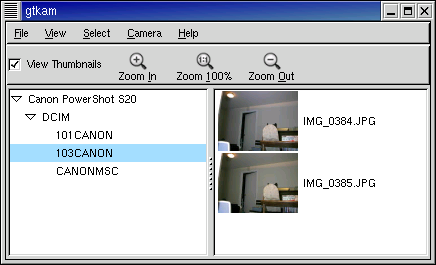

Every time you connect the camera, unmount it (normally a dialog box appears asking what program you want to run, click on the "Unmount" button there otherwise, right click on the camera icon in the desktop and select "Unmount"). On the Nikon D40: Menu, Setup Menu (the monkey wrench), USB. Incidentally, if you want to try this, here's two pointers:ġ. That would let it shoot at its maximum speed of 2.5 photos per second.


I haven't found an option to tell the D40 to take a picture and store it in its memory card (plenty of room there, with an 8 Gb SDHC). It could easily take one every two seconds, but not much less because of the time it takes to download the photos via USB. Here gphoto2 is set to take a picture every four seconds. The computer boots Easy Peasy (an Ubuntu variant for the EeePC) from a USB hard drive (hidden behind the display in this video). The -frames 0 is forever, and the files go into the current directory. Gphoto2 -auto-detect -force-overwrite -capture-image-and-download -frames 0 -interval 10 -filename "%Y%m%d%H%M%S.jpg" It even works with primitive technologies such as "Canons". Just connect the camera to the laptop, run the command below, and it'll take photos and keep transferring them straight to the laptop, so no space constraints either. That's right, it means I don't even need to BE there as the camera's taking photos - some of this video was created in that way. It's HD, you can go fullscreen too.Īlso, good news everyone! I have found a way of automating the process of taking time lapse videos. Sorry about the clouds obscuring the stars, they just suddenly showed up.Īlso, turn the volume up, you might like the music for once.

In addition to the usual sunrise and sunset, there's a bit of a moonset. 4862 images (average a thousand taken each day and drastically sped up). This would be my most 'ambitious' time lapse video ever.


 0 kommentar(er)
0 kommentar(er)
